Best LED Color Temperature For Your Kitchen – Full Guide October 25, 2023 – Posted in: Home Lighting, Lighting Information
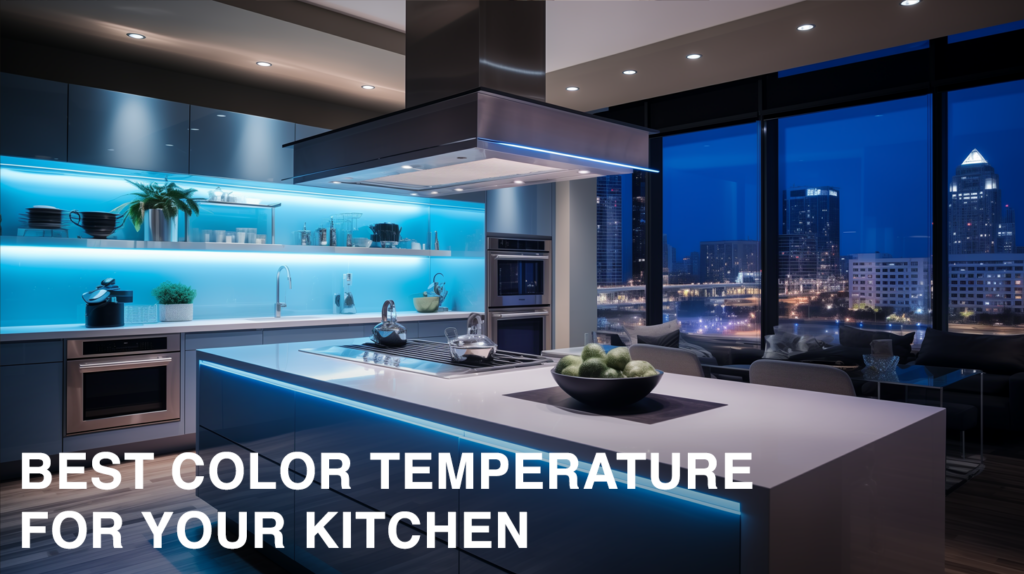
Table of Contents
Choosing the best color temperature for your kitchen lighting can feel like trying to solve a cryptic crossword puzzle. We’ve had many customers reach out to ask us about which color is best for them.
Yet, there’s no need for concern! After pouring over extensive research and asking leading experts, we’ve made this guide to make the selection process a breeze.
So grab yourself a cup of coffee, sit back, and delve into our detailed guide below as we shine light on transforming your cooking area with just the flick of a switch!

Key Points
- The Kelvin scale tells us about a light’s color. Low numbers give warm light and high ones give cool light.
- You can mix warm and cool lights in your kitchen for the best effect. Use cooler lights where you do most work.
- Changes to your kitchen’s lighting can make it feel different. Picking the right light is key!
- Bulbs with higher lumens are brighter, while bulbs with a high CRI show colors well.
Understanding Light Color Temperature and Kelvin
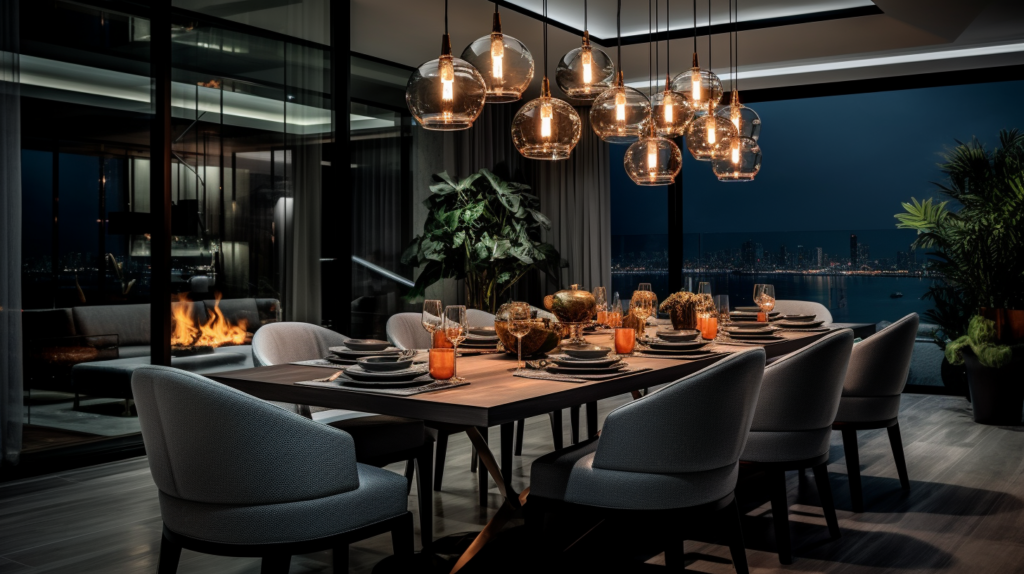
Color temperature, measured on the Kelvin scale, impacts our perception of a room’s mood and appearance. White LED lights come in various color temperatures that can dramatically change how your kitchen feels.
The Kelvin Scale
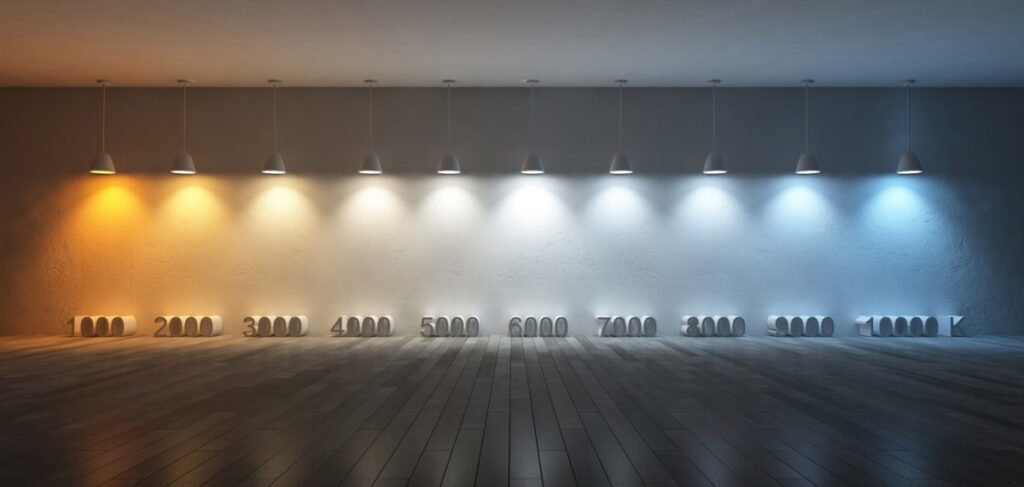
The Kelvin Scale helps us know if the light is warm or cool. It goes from 1,000 to 10,000 degrees of Kelvin. Low Kelvins give us a warmer light. High Kelvins make the light cooler and bluer.
This scale guides us on picking the best bulbs for our cooking area.
Effects of color temperature on the mood and appearance of a room
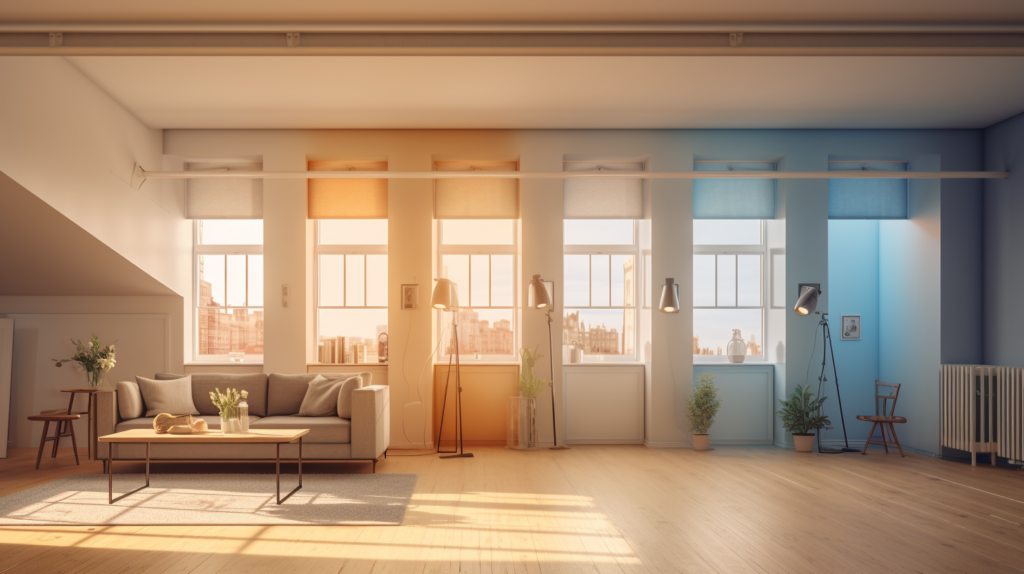
Color temperature changes how a room feels and looks. High kelvin numbers give off cool light which is white or blue. This kind of light makes rooms feel active and bright. It’s great for places where you need to see clearly.
Low kelvin numbers give off warm light which is yellow or red. Warm light creates a cozy, relaxing mood. It can make colors look softer and spaces feel more inviting. So, applying this knowledge, we can choose the right lighting tone for our kitchen depending on what feel we want it to have!
White LED color temperature options
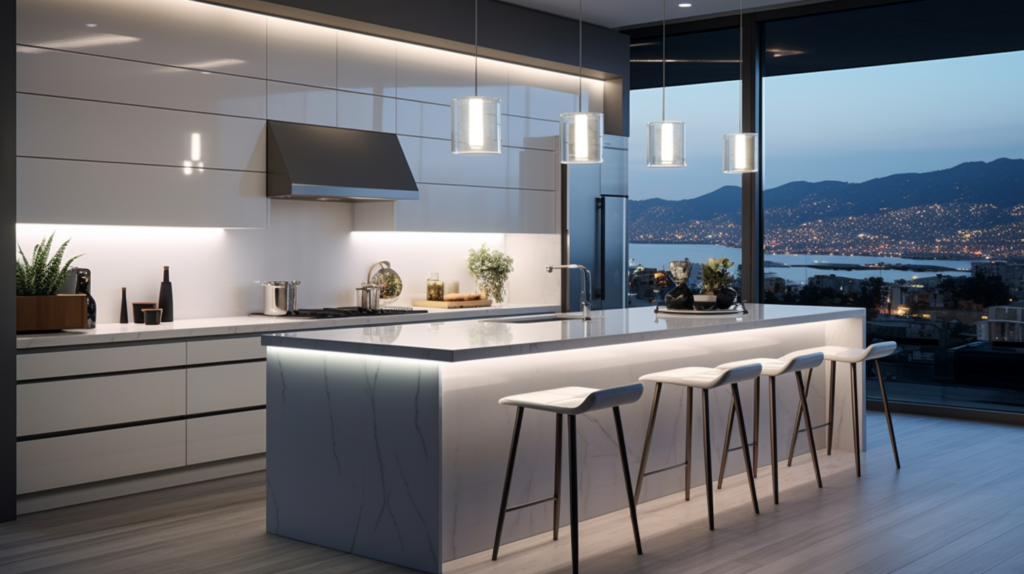
We love how LED light can instantly change the feel of the kitchen. When shopping around, there are several common names you’ll see on packaging:
- Warm White (2700K – 3000K): This gives off a warm and cozy feel, like incandescent bulbs. They work well in living rooms too.
- Soft White (3000K – 4000K): Here, we get a bit more brightness. It feels yellowish but not as cozy. It’s best suited for kitchens and traditional home offices.
- Bright White/Cool White (4100K – 5000K): The light starts to turn bluish here. It emits a crisp and clear look, perfect for work spaces or any room that needs ample light.
- Daylight (5000K – 6500K): These LED bulbs have a very cool light color, almost like daylight. They are best used in large kitchens with white cabinets.
Choosing the Best Color Temperature for a Kitchen
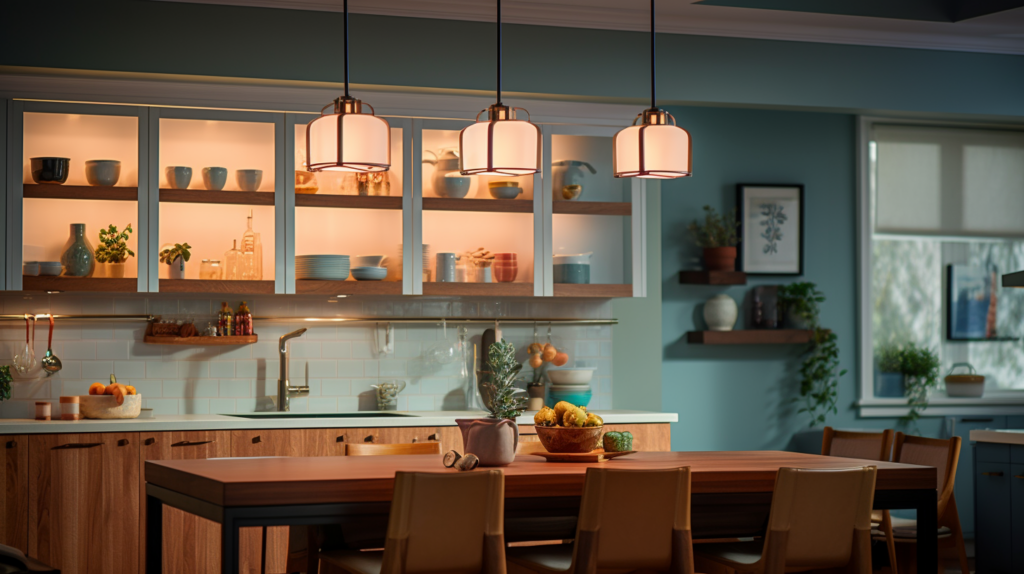
When choosing the perfect color temperature for your kitchen, you need to consider a few things. If you prefer a warm and cozy feel in your cooking space, go for a warm white color which emits softer white light.
For those who want their space to have a crisp and clear look when preparing meals or hosting dinner parties, opt for lights with higher Kelvins – around 4000K to 5000K. You can also use a mix of warm and cool lighting tones by placing different color temperature lights in specific areas. Such as over the sink or on the kitchen island to create an inviting yet functional style.
It’s all about balance; after all, we’re cooking up more than just food here!
3000K for a warm and cozy feel
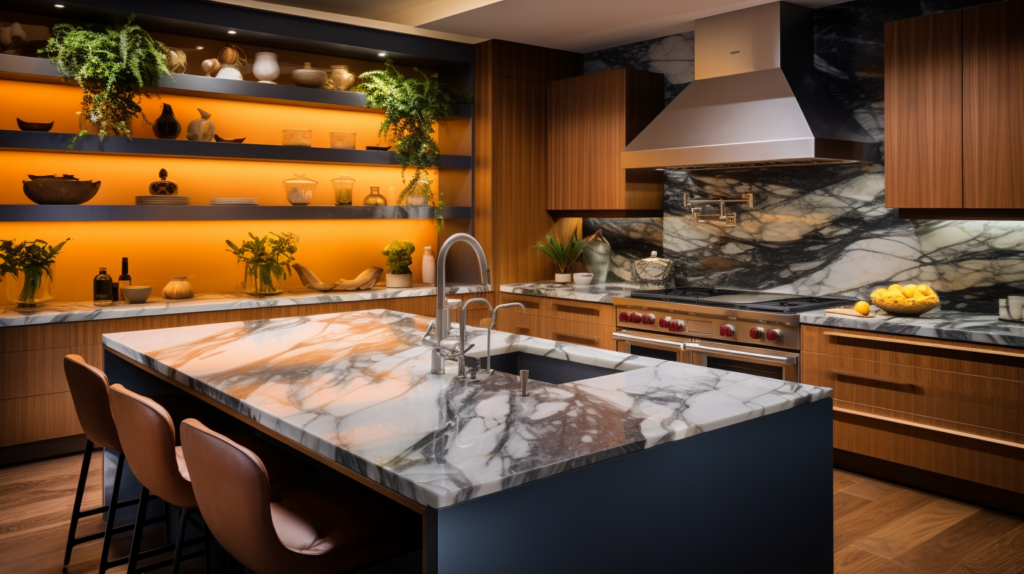
We suggest 3000K lighting for a warm and cozy feel in your kitchen. This light color is known as warm white. It gives off a soft glow that makes the room inviting. If you want to add some coolness, go for 3500K lights.
They emit a cool white light but keep the coziness intact. Both these options can make your kitchen shine with warmth and comfort while being easy on your eyes.
4000K or 5000K for a crisp and clear look
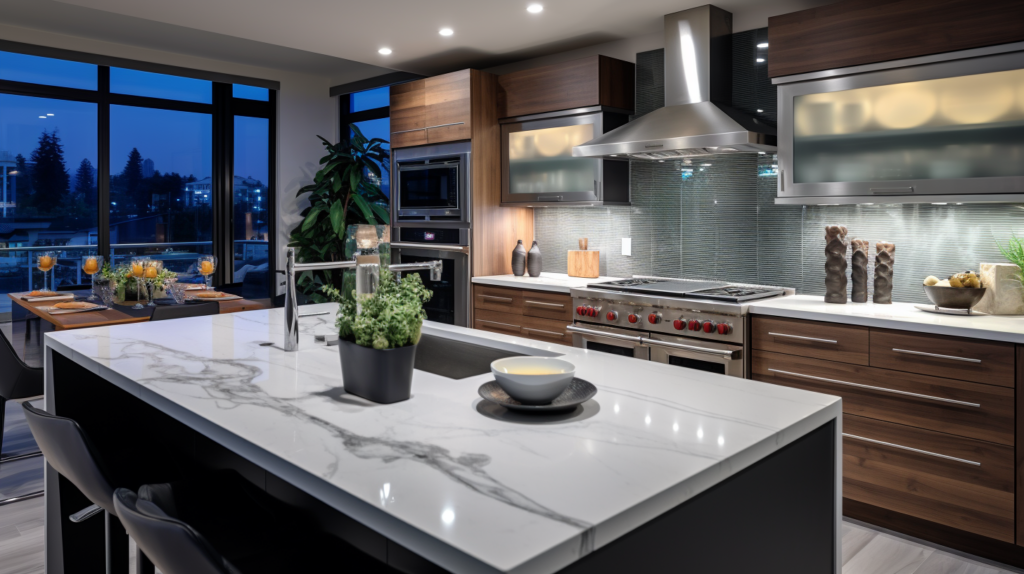
For a crisp, clear look in your kitchen, you might want to try 4000K or 5000K lights. These are cool white lights. They give off a bright and vibrant glow. This type of lighting is perfect for work spaces like the kitchen island where we’re cooking or reading recipes.
The cool white bulbs emit more blue light. It’s great if you prefer strong illumination while cooking. But beware! Too much blue light can seem harsh and affect your sleep patters if you find yourself spending your late hours in the kitchen.
So, it all comes down to what kind of feel you really want for your kitchen.
Using a mix of warm and cool color temperatures
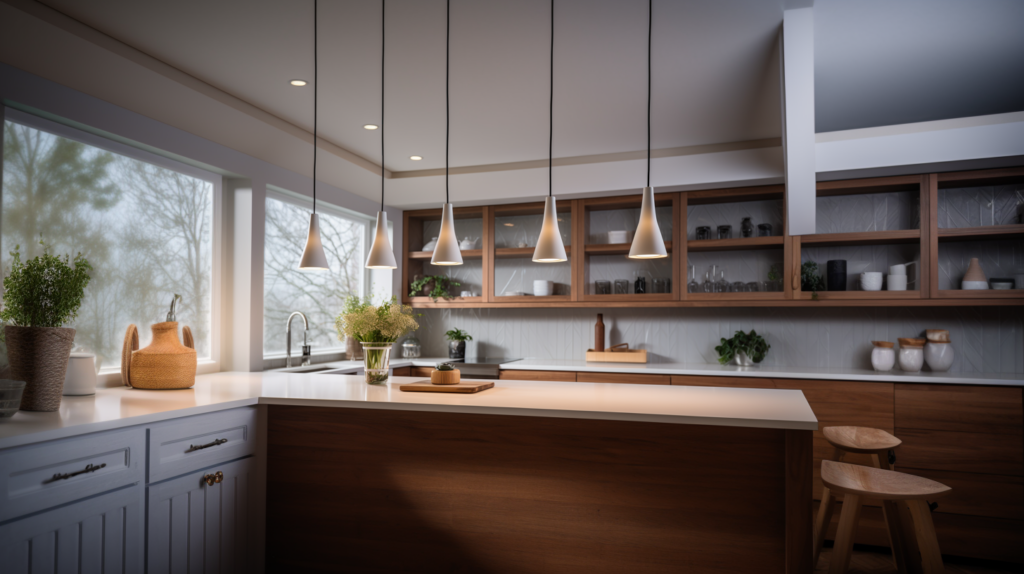
We can start by understanding that a mix of warm and cool color temperatures could shape the best light for your kitchen. Here’s how you can do this:
- Use a balance of 3000K and 4000K bulbs. This blend adds warmth as well as clear and bright light.
- Place cool lights in areas where we work most. This makes tasks like cutting or mixing food easier.
- Bright white or cooler light is superb above the kitchen island or sink. These are places where we need focused light.
- Rooms in your home, like the dining area, look better with warmer lights (2700 – 3500K). They add a cozy feel to meal times.
- Soft white LED bulbs are ideal for living rooms because they make colors look better.
Factors to Consider in Choosing Color Temperature
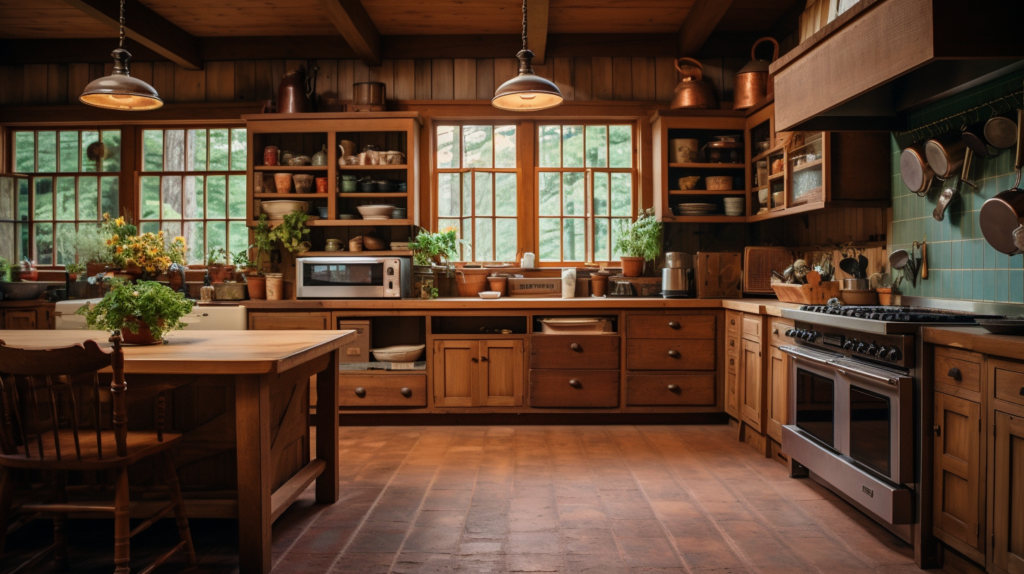
When selecting the right color temperature for your kitchen, it’s important to consider how lighting can enhance or mute certain hues of your cabinets. Also, don’t forget about the essential role of Color Rendering Index (CRI) and lumens in measuring brightness clarity! Ever thought about using color selectable light fixtures too? Find out more on our comprehensive guide on this topic.
How lighting affects kitchen cabinet colors
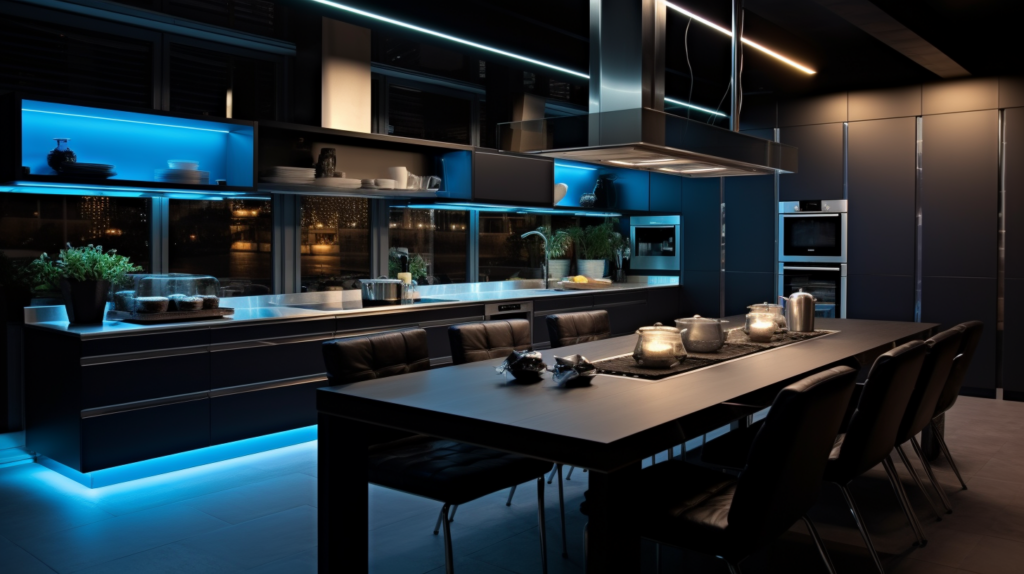
The lights in your kitchen play a big part in how your cabinet colors look. Warm white light makes colors like red, orange and yellow show up better. They give wood grain cabinets a warm and rich look.
But if you use blue, green or white tones in your interior design, cool white light will make them shine. LEDs are great for this because they let you pick the color temperature. The Kelvin scale helps with that choice.
The importance of CRI (Color Rendering Index) and lumens
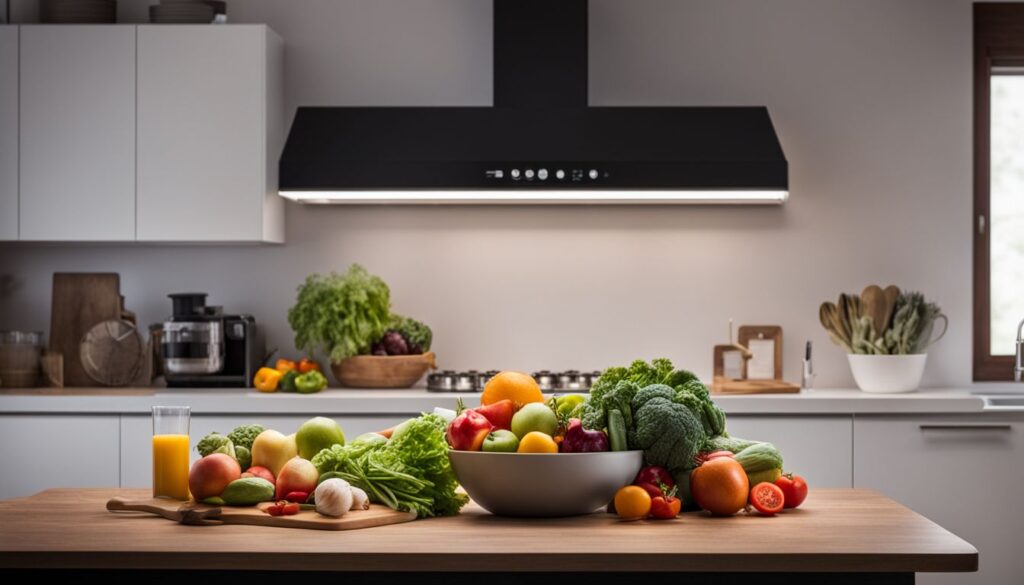
CRI and lumens are key to choosing the right light for your kitchen. CRI tells us how real colors look under a light source. The higher the CRI, the more natural and vibrant foods appear in your kitchen. A CRI of 90 or over is top notch. Lumens tell us how bright a light is. More lumens mean brighter light. For example, an LED bulb with high lumens can make your kitchen shine brightly even at night! This will help you see better while cooking or cleaning up.
Using color selectable light fixtures
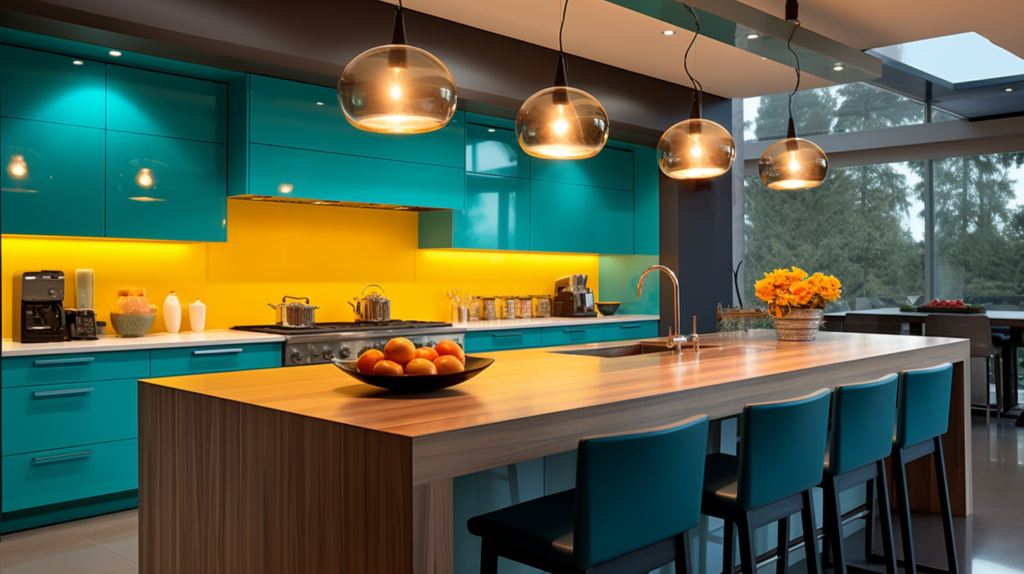
We are big fans of using color selectable light fixtures in the kitchen. Here’s why:
- You can change the color of light any time you want. It means your kitchen can have cool white light in the morning and warm white light in the evening.
- It’s an easy way to play with color temperature without buying new bulbs or fixtures.
- You do not need to decide on just one color. With these fixtures, it’s like having several bulbs in one!
- Your mood might change, and so can your lighting. Color selectable fixtures let you change the vibe of your room in a click.
- They give you more control over how colors look in your kitchen. With a simple switch, your red apples can look more appetizing!
Tips for Finding the Perfect Color Temperature for Your Kitchen
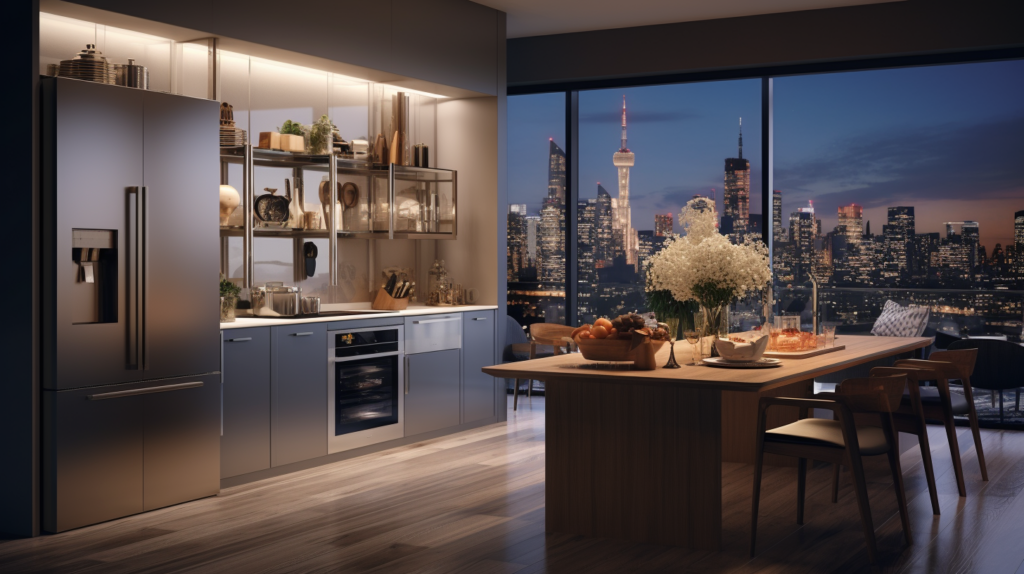
In defining the perfect color temperature, consider not just functionality, but also aesthetics and versatility. Explore different styles of kitchens to determine which temperature best suits each design; traditional or modern kitchen? A 4000K bulb may be ideal for bright task lighting in a contemporary setting while a warm 3000K light could enhance a cozy farmhouse style kitchen.
Remember, balance is key; smart bulbs allow you to change the color and brightness levels throughout the day for varying activities and moods. Ultimately, making mindful choices on your kitchen’s lighting can greatly enhance its ambiance while ensuring sufficient light for practical tasks.
Consider the functionality, aesthetics, and versatility of the space
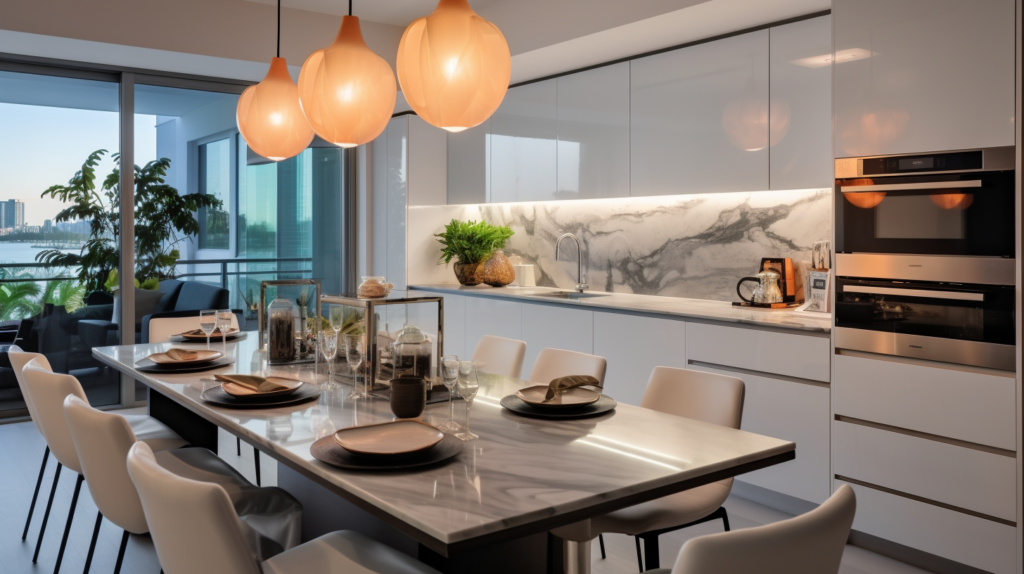
First, look at how you use your space. Do you cook a lot? If so, bright light is best. This helps you see what you’re doing and keeps your kitchen safe.
Next, think about style. Light can change the way your room looks. Pick a color that fits with your design plans to make everything pop!
Finally, consider a flexible choice. Kitchens aren’t just for cooking anymore. You might eat or do homework there too as well as chat with friends over coffee – cool white LED lights work well here.
The best color temperature for different kitchen styles
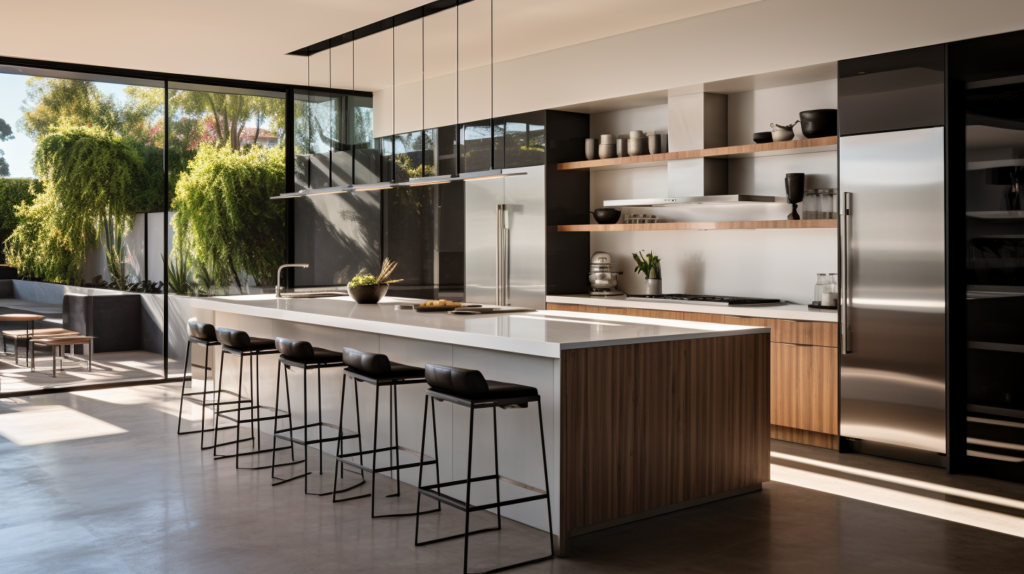
Interior design style plays a big part in picking the right light color. Here are the best choices for different styles:
- Modern kitchens shine with cool white light. LEDs around 4000K to 5000K bring out crisp lines and clean finishes.
- Traditional kitchens call for soft, warm light. Bulbs from 2700K to 3000K give a cozy feel that fits right in.
- Country – style kitchens work great with warmer lights, too. Soft white or warm white LEDs help keep things homey.
- For rustic kitchens, stick with warm colors as well. They match well with wood tones and add a nice glow.
- Industrial – style kitchens need brighter, cooler lights. Try bulbs closer to 5000K.
Wrapping up with a summary of the benefits of using the right color temperature in your kitchen
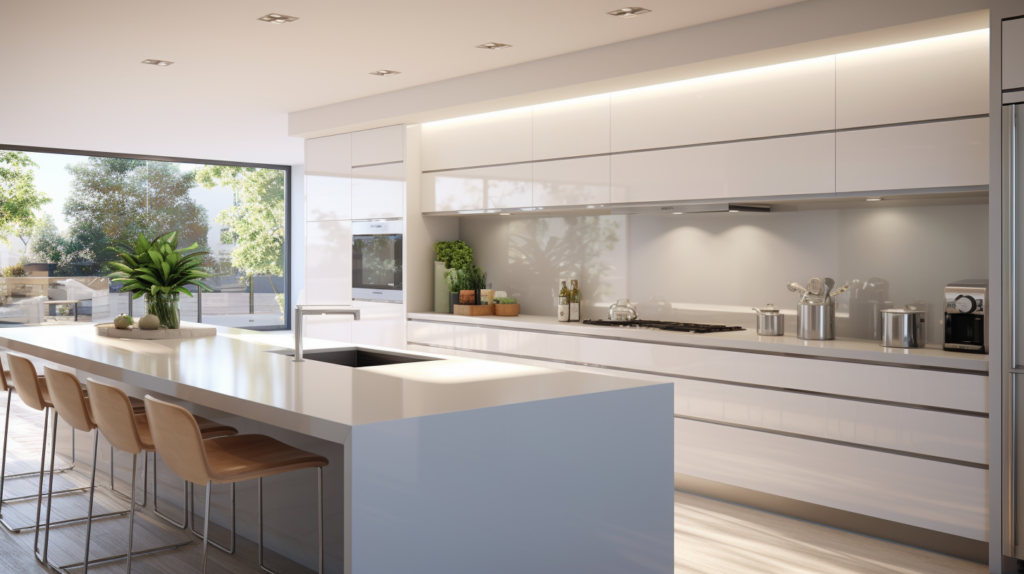
In the end, all that matters is that you’re happy with how your space looks.
“Be faithful to your own taste, because nothing you really like is ever out of style.”
Billy Baldwin
The perfect light tone makes cooking a delight and eating even more enjoyable.
If you have any more questions, feel free to ask in the comments.
FAQs – Best Color Temperatures For Kitchen
How do I choose the right color for my kitchen light?
To choose the best color, measure how much wattage you need, then buy lighting depending on the style and use of your space. If you can’t decide, pick a selectable LED fixture that you can adjust to your use.
What is the proper lighting for kitchens?
Proper lighting in kitchens often needs higher lumens, pendant lighting over bar or island and a recessed lighting set-up.
What does ‘higher the kelvin, cooler the light’ mean?
Higher Kelvin means that your light will look more white and blue which is cool; lower Kelvin makes it look yellower making it cozier.
Can I use any watt bulb in my kitchen?
It’s best to check your lights first before you buy bulbs so you know what wattage fits them. For LED’s you should refer to the lumens to make sure you’re getting enough light to fill your space.
I have been the project manager for Modern.Place since early 2016, spending three of those years working overseas on the manufacturing & procurement side of the LED lighting industry. Constantly learning and passing on knowledge to others while excited for what the lighting industry will involve into next.

